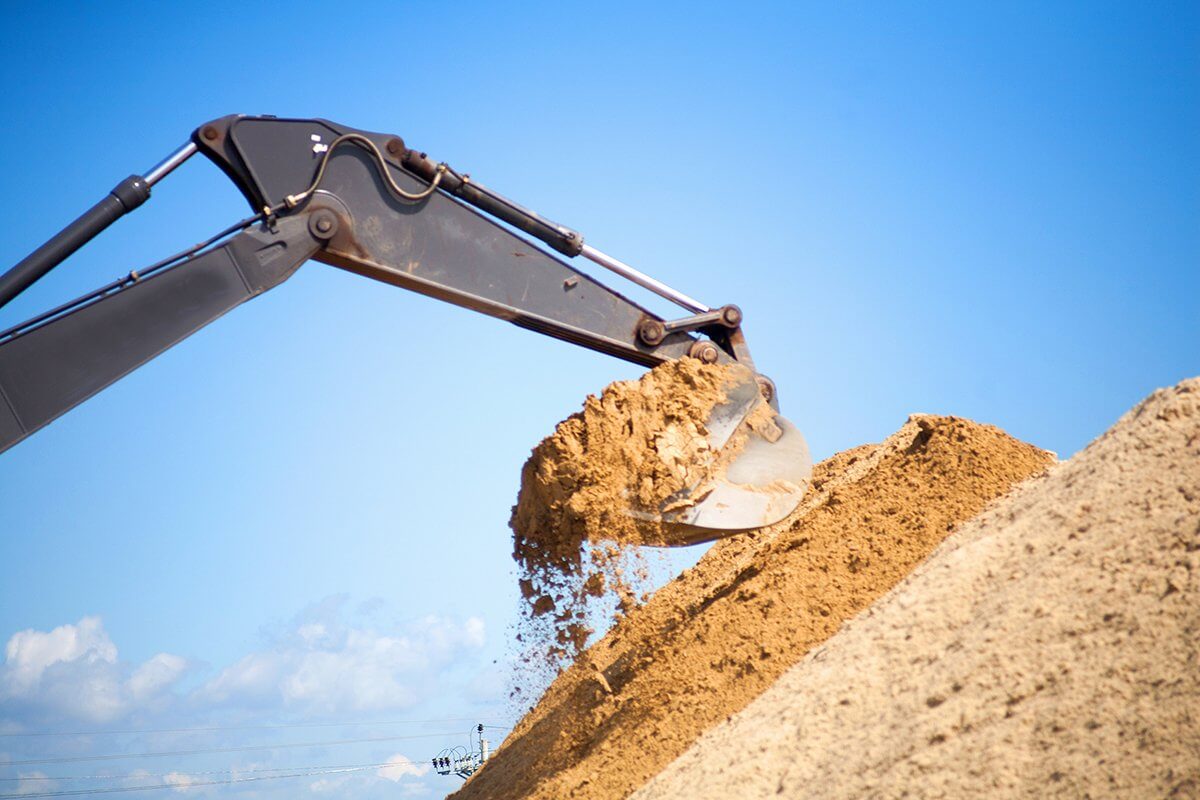In experienced hands, an excavator is a versatile tool that can make light work of a variety of earthmoving and construction jobs. But it can also be highly dangerous if used incorrectly. This guide looks at choosing the right excavator for the job, and how to safely operate it in a range of different work environments.
Types of excavators
Using the wrong excavator can expose the operator to risk, so it is important to identify the task being undertaken, then choose an excavator of the correct size and weight to complete it safely and efficiently. You should ask yourself the following questions:
- What is the work that needs to be done (earthmoving, digging, lifting etc)?
- What is the size and condition of the work site (an open cut mine, a building site etc)?
- What special requirements are there (do you need attachments for pipe lifting, landscaping etc)?
- How long is the job (will operator comfort need to be a primary consideration)?
Excavators are used for much more than just moving earth and the different uses they are put to each carry their own risks. As well as digging, excavators are used for drilling, grading, pile driving, snow blowing, brush cutting, mulching, materials handling, dredging, tunnelling and heavy haulage.
There is an excavator of the right size and power for any job, so correct selection comes down to hiring from a company with a good range to choose from such as Solution Plant Hire. Excavators generally come in the following configurations:
1. Compact excavators
These use less power and have tighter turning circles, making them ideal for working in confined spaces. Sizes include 1.7, 3.5, 5.5 and 7 tonne capacities.
2. Standard excavators
Standard excavators are suitable for most jobs and are widely used on building and construction sites and for jobs like digging, materials handling, demolition, dredging and forestry work. Sizes include 7, 8, 14.5, 23.5 and 30 tonne capacities.
3. Large excavators
Large excavators are used in mining and industries where large amounts of earth need to be moved. Sizes include 45 up to 80 tonne capacities.
4. Specialist excavators
Specialist excavators are designed for particular jobs and include knuckle boom excavators (an extra arm joint), long reach excavators (an extended reach), zero swing excavators (for confined spaces), spider excavators (all-terrain legs) and amphibious excavators (float on water).
You may need additional attachments for your project. Take a look at our range at Solution Plant Hire here.
Dangers posed by an excavator
Operating an excavator of any size can expose the driver to a range of health and safety risks including:
- Overturning – if the excavator is operated on an uneven or sloping surface, there’s the danger of rolling over.
- Falling objects – if an excavator is being operated on a site with overhanging objects such as in a construction or mine site, there is a risk of an object falling on the cab.
- Collision – if the excavator is operating in overly confined spaces, there is the danger that it will collide with nearby objects such as vehicles or buildings.
- Mechanical failure – if the excavator is poorly maintained and a mechanical or hydraulic component fails, it could result in a serious accident.
Risk identification & management
Before beginning work with your excavator, you should first identify any safety risks presented by the job site. These could include hazards such as:
- Overhead power lines – your excavator should not operate any closer to these than necessary. There should be a spotter on the ground to ensure a safe distance is maintained.
- Buried pipes & cables – plans should be obtained from relevant authorities before digging, as severing communication or utility lines could not only be hazardous but also highly expensive.
- Immovable structures – these could include foundations, walls and buildings which cannot be moved. In such instances, the best thing is to isolate them with signs, barriers or fences to reduce the likelihood of coming into contact with them.
Working on slopes
Most heavy machinery is designed to be used on level ground, so sloping terrain can be a particular hazard when operating an excavator. Just as a crane operator must calculate safe weight limits for their lifts, an excavator driver must carefully assess how to approach working on sloping terrain. Factors to consider include:
- Degree of slope – an excavator should not be operated on a slope greater than 70% due to engine lubrication requirements.
- Direction – the tracks should always be pointing up or down rather than sideways to the slope.
- Stability – never travel on a slope with the attachment raised. Keep it low to the ground to aid traction and stability.
- Traction – never reverse down a slope, as you need the attachment at the front in case the excavator begins to slide.
- Swing – use extreme caution when swinging an attachment downhill to prevent momentum from overcoming the swing brake.
The operator is responsible for their own and others’ safety in and around heavy machinery, so be sure to discuss your needs with us first at Solution Plant Hire.
View Your Excavator Hire Options Below:




